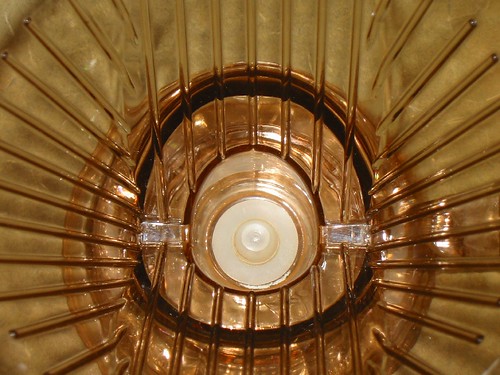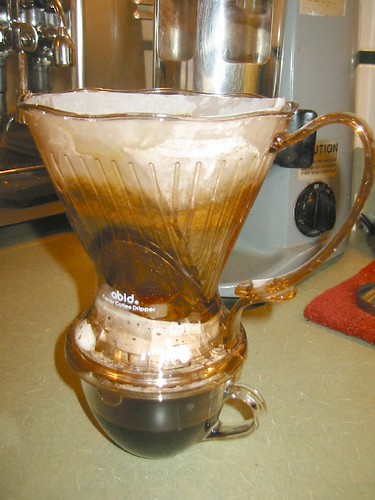Simon Hsieh is a coffee roaster, author, translator, and gourmet columnist in Taiwan. We took notice of Mr. Hsieh after Ben C. met him in recent travels. Ben brought his coffees back for us to sample and it left a lasting impression on us. We at Barismo decided an interview would offer us a chance to learn more about Mr. Hsieh and his visionary approach to coffee quality.
Tell me a little bit about yourself.Hi, I'm Simon Hsieh, a Taiwanese coffee book writer and the Chinese version translator of Ken Davids' Home Coffee Roasting. I started as a home roaster in 1999. Due to my passion for a better cup of coffee, I decided to step deeper into the coffee industry in Taiwan.
Since then, I have been working on improving quality in the Taiwanese market. I truely hope that every cup served can have better quality rather than just commodity grade. To achieve this, I devoted myself to take part in many tasting & brewing events in places all over Taiwan, exemplifying the true tastes of good coffees.
What is your roasting philosophy?My goal is the "true tastes in good coffees". I roast most of the good single origin coffees in a light to medium roast style to preserve as much varietal/origin characteristics as possible. I believe every good S.O. has something more exciting when they are less costumed with roast flavors; that is to say, they can express themselves well enough in the lighter stages of roasts. That's why they cost so much, isn't it?
Even though I personally prefer the light to medium roast style, it doesn't mean that I can't do well with the darker roasts. Whatever the roast style I do, I do it to achieve a balanced "sweet/fruity/complex" profile. But the most important thing is, I always want to optimize the aroma for every coffee.
Where did the concept of "zero-defect" coffee come from? And what do you seek to accomplish with it?The "zero defect" concept just appeared to me when I got my first delivery of green coffees as a home roaster. I can still recall that package of green coffees which consisted of a Peru Norte, a Sumatra Gr.1, a Costa Rica La Minita, and a Kenya AA Auction Lot. When I opened the bags, I felt so happy to smell the fresh greens until the Sumatra was opened. I thought to myself 'ughhh.... I wonder how it would look by how it smelled.'
Then I looked further into the Sumatra greens and found so many disgusting moldy and black beans inside. I wondered, 'Am I gonna get sick if I drink the coffee made from those moldy greens?' It's horrible, at least to me, so I started my "sorting journey" with this Sumatra. That gave me a great shock after I rejected almost 50% of those eye-offenders in the Sumatra. What the hell had I drunk before I did this?! As I dug further into other bags, I also found some unbelievable percentage of defects in those green coffees. These were purchased from a famous US specialty green coffee retailer and all were so-called 'specialty grade' coffees. From that day on, I haven't believed the 0 defect/300 gram descriptions anymore. Whatever I get, I sort before I roast. At first it was just to make myself feel easier to drink a cup from clean greens; but soon I found that the cup was improved remarkably due to the sorting. This has driven me to the unremitting "sorting movement".
Since I was alone in this practice, I felt the need to address this injustice. I then decided to introduce the concept of "Zero Defect Coffees" to deliver a more direct message for people and my roasting business started (
4-Arts Zero Defects Coffees).
You might be confused by the industry-wide sayings that you can get a better cup if you buy the "specialty grade coffees" and use the fancy equipment. Yes, better equipment is an important element for a good cup of coffee and specialty grade coffees are indeed better than the commodity grade ones. But, what does the word "specialty" really mean? Obviously the current definition for "specialty" isn't quite special enough for me.
IMHO, a good coffee can never be good enough if there is a great deal of defects still in it. Even a pricey Jamaican Blue Mtn. No.1 has up to a 30% rejection rate. If pricey coffees are so bad and you are willing to pay that much for it, why not get a cleaner one? If you really care about quality, then the defects in the coffee shouldn't be ignored. It should be of equal emphasis in determining the cup quality. For this reason, I choose premium greens to sort and sell the roasted products in hope to draw people's attention to the subject that I'm selling "defect free" coffee concept rather than just "specialty" coffee.
What are some of your favorite coffee in the past?
I especially love the "aroma bombs"--to be specific, the Kenya AA's, Ethiopian Yirgacheffe, Panama Hacienda La Esmeralda Gesha and Hawaiian Kona. If I need to take price into account, I would choose the Kenya AA's because I can get the most pleasure while spending the least.
What is the biggest challenge you face in your job now?
The biggest challenge for me is still the mainstream Taiwanese coffee drinkers' tastebuds. For most older generation coffee drinkers, they still regard coffee as a "bitter and smokey beverage" and cannot accept any acidity in the cup. Those older generation drinkers affect their children directly in their impressions of coffee. So we always need to face people with the "bitterness" issue first. It's painful but I know it's inevitable. If I want to convince more people to appreciate how good coffee can taste, I need to tell them early in their coffee experiences every time. There are no other ways to achieve this goal.
So, I just keep telling and showing people. People will realize after many experiences of comparing and contrasting different coffees. Some will come back eventually and tell me, "ohh...now I know how good coffees should taste like."
-Simon Hsieh




